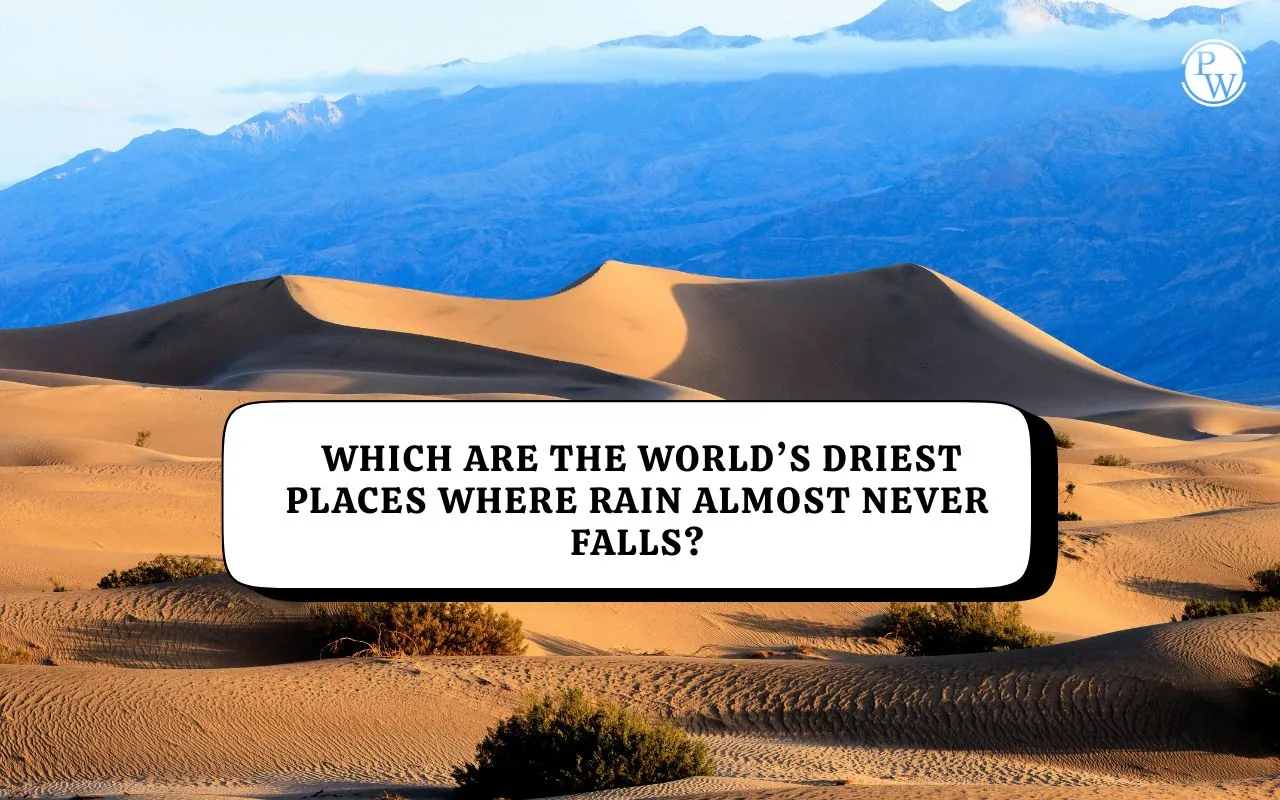

Across the planet, some regions experience almost no rainfall, creating extreme environments where survival depends on adaptation. These are five of the driest places on Earth. Such types of questions are often asked in UPSC exams.
1. Arica, Chile
Located on Chile’s northern coast beside the Atacama Desert, Arica is the world’s driest inhabited city. The city averages just 0.76 mm of rain annually, and some years see no measurable rainfall. Residents rely on fog nets and irrigation systems to collect water from a coastal mist known as camanchaca, which provides limited moisture to the area.
2. The Atacama Desert, Chile
Running along Chile’s Pacific coast, the Atacama Desert is one of the oldest and driest deserts on Earth. Certain parts have no recorded rainfall at all, while others receive less than 1 mm per year. Its barren terrain is used by NASA to test Mars rovers due to its close resemblance to the Martian surface. Still, life persists through microorganisms and plants that extract moisture from fog and underground water sources.
3. Aswan, Egypt
Situated in southern Egypt along the Nile River, Aswan receives less than 1 mm of rain each year. Some years pass without a single drop. The desert landscape is dominated by sand dunes and intense heat, but the Nile remains a vital lifeline, supporting agriculture and daily life through irrigation and careful water use.
4. Ica, Peru
On Peru’s southern coast, Ica records under 2.5 mm of annual rainfall. Its dryness is caused by the Humboldt Current, which prevents rain clouds from forming, and the Andes Mountains, which block humid air from the Amazon Basin. Despite the arid climate, rivers and aquifers sustain vineyards and farms, turning the desert into productive farmland.
5. Death Valley, USA
Located in eastern California, Death Valley is one of North America’s hottest and driest regions. It holds the world record for the highest temperature ever recorded—56.7°C (134°F). Rainfall is scarce, and when it comes, it can cause sudden flash floods. Despite the extreme conditions, the valley’s salt flats, dunes, and rock formations continue to attract visitors worldwide.
A Landscape of Extremes
These regions show the limits of life on Earth and the adaptability of nature and humans in the absence of rain. Even in the harshest conditions, survival continues through resilience and innovation.
